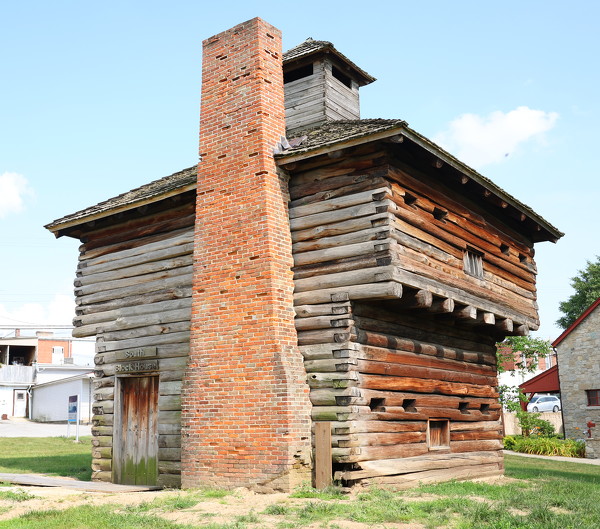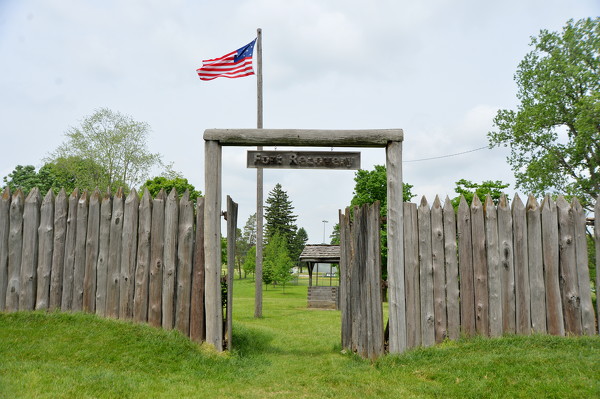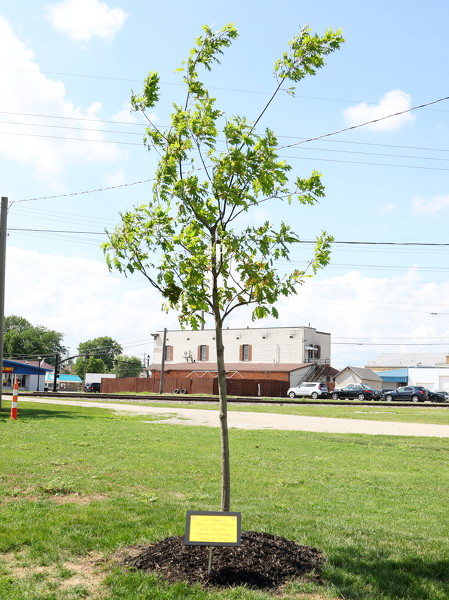
Repairs to the South Blockhouse at the Fort Recovery State Museum will be completed by the end of this summer.
FORT RECOVERY - Ohio History Connection has started a sizable structural improvement project at the Fort Recovery State Museum to repair the reconstructed block houses, stockade and guard house.
Museum site director Kim Rammel said repairs to the block houses were completed earlier this year through Ace of Trades, which contracted another company to do the work.
Ohio History Connection owns the museum as well as the monument in town and is covering the cost of the repairs.
"Ohio History Connection owns the museum, the block houses and the monument. They want to maintain it," she said. "It was like an emergency, actually. We were just going to do the stockade wall - that was the initial project. And then we go to look at the block houses and how much that had shifted, and we realized that, yeah, we've got to do that first."
Rammel said the block houses sit on a concrete foundation. However, the foundation was built on a riverbank causing the concrete to sink in over the years and other issues.
"They bored around the block houses and… had to go down so deep to find solid rock, and then they put jacks underneath the block houses and actually lifted them up," she said. "Both of them are (on jacks) because both of them were sinking. The north (block house) closest to the road was tilting really badly. It actually pushed out one of the windows on the big closures where the cannons come out, and it moved enough that it was causing structural problems."
Now that work on the block houses is completed, Rammel said Ohio History Connection has approved funding for the rest of the job. Ace of Trades will also handle work for this project, she said.
"Everything's stabilized now, so now there's some structural things they have to repair on the south block house," she said. "Then they're going to reproduce the stockade wall and then those other little walls that were on the backside."
"We're going to have a new wall and it's all going to be done with a concrete foundation," she continued. "The existing stockade was put in dirt, they built the dirt up and the big posts were in dirt … so now we're going to do it properly and it's going to be a bit more of a process."

In this photo taken in June 2022, the entrance to the Fort Recovery State Museum stands tall. Repairs to the stockade will be finished by the end of the summer.
Rammel said the work should wrap up by the end of summer. While she didn't have an estimate of the total project, Rammel surmised the repairs would be costly.
The fort was built on the site of St. Clair's Defeat in 1791, often referred to as the most decisive defeat in the history of the American military and the largest victory ever won by Native Americans. It was a key victory for the Western Confederacy of Native Americans, a coalition of nine tribes led by Little Turtle of the Miami Tribe and Blue Jacket of the Shawnee.
Fort Recovery was built by Gen. Anthony Wayne in 1794, who was sent to succeed where Gen. Arthur St. Clair had failed. The fort had four blockhouses and was surrounded by a fifteen-foot high stockade wall, according to Ohio History Connection. Wayne later defeated the Native American alliance at the Battle of Fallen Timbers on Aug. 20, 1794.
"These events were pivotal in the relationships between the Native people defending their homelands and invading American soldiers and settlers, setting the stage for the 1795 Treaty of Greenville, after which American Indians relinquished most of their land holdings in Ohio," the museum website reads. "They also set the course for determination of land ownership in contemporary Ohio and the 1830 Indian Removal Act, forcibly removing American Indians from their Ohio homelands."

The log buildings at the Fort Recovery State Museum are among the more popular tourist attractions in the area.
A reconstruction of the fort at Fort Recovery was done in 1936 by the Ohio State Archaeological and Historical Society and the Works Progress Administration, according to the Fort Recovery Historical Society. It was about one-third the size of the original with a block house and a reconstructed oak-walled well.
In 1956, the Ohio Historical Society replaced the four-sided 1936 fort with the present reconstruction - two accurately-scaled block houses, stockade fences, a firing platform and a gate, according to the local historical society.
The building that is now the museum was built in 1938 by the Works Progress Administration and first housed the Fort Recovery Library, per the historical society. The historical society opened a museum in the upstairs balcony of the library for the purpose of displaying local artifacts in 1949.
When the library moved to its current downtown location in 1968, the Ohio Historical Society made plans to renovate the former library into a museum for exhibits depicting early Native American history and the battles fought at the site, according to the Fort Recovery Historical Society.

